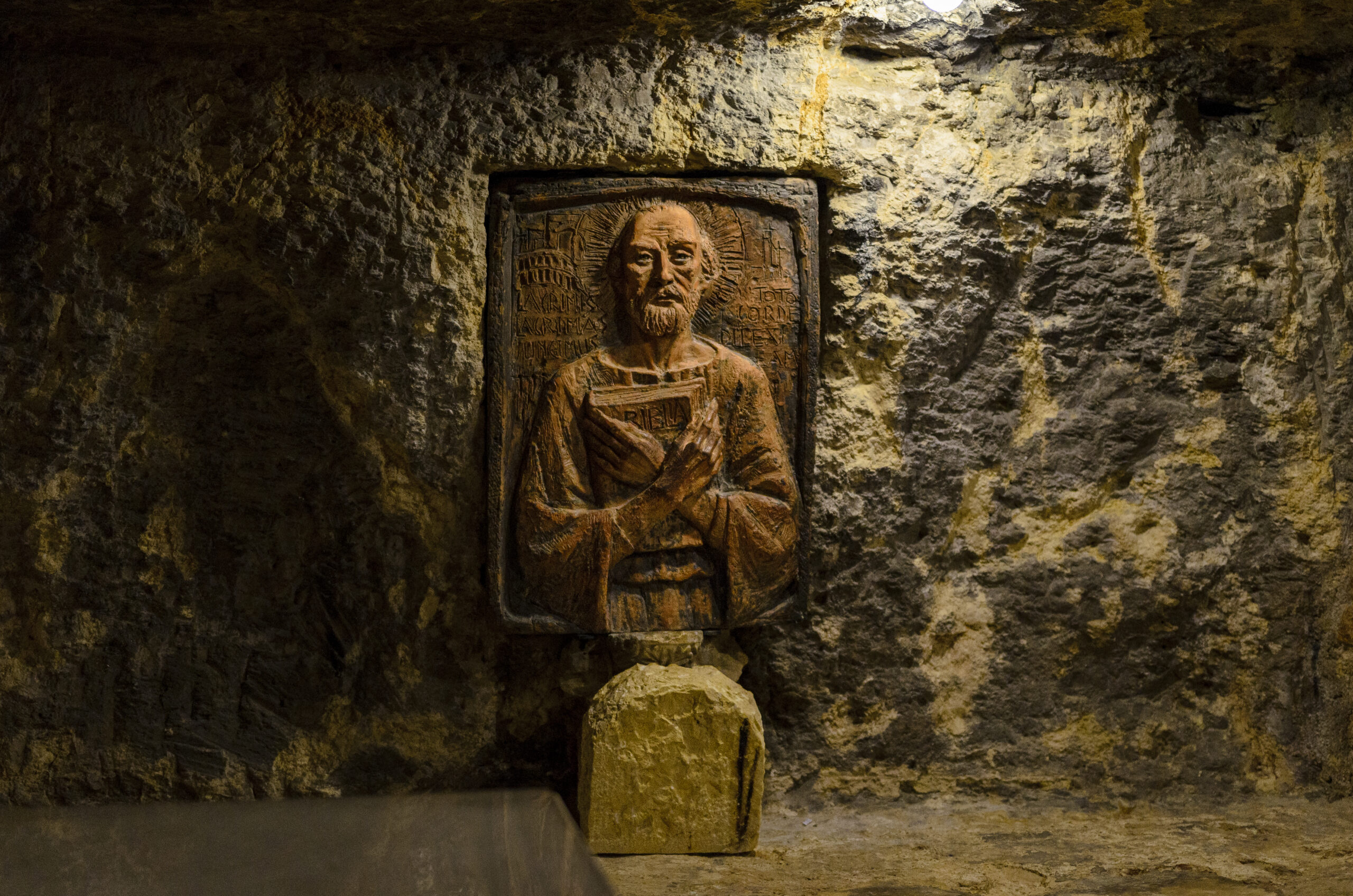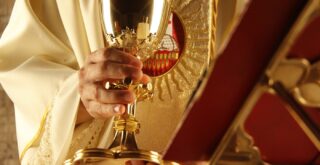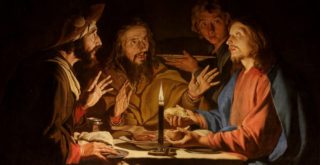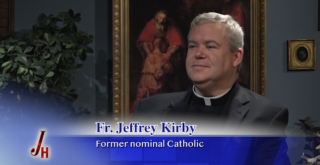
This article is part of a longer piece by Jeffrey Shott on Christian authority and Church history; the full article can be accessed at jeffreyshott.com.
*****
When I converted from atheism to Christianity, I had to start from scratch. I had to answer the most basic, practical questions: What exactly am I supposed to believe now? Where should I go on Sunday mornings? I tried to answer these questions by seeing what other Christians had to say about them, but I quickly discovered that they all disagreed. This realization led me to ask what would become one of the defining questions of my life: How are Christians meant to resolve theological disputes?
My first thoughts turned to the Bible. After all, Christians all agree that the Bible is the Word of God. If we agree that this book is from God, shouldn’t we all believe what it says and point to its teachings if there is ever a dispute? This seemed logical. However, I soon learned that practically every theological dispute in Christian history has been about what exactly the Bible means. To further complicate matters, I also discovered that Christians disagree not only about what the Bible means, but also about what it even is. While Protestants say the biblical canon consists of 66 books, Catholics say there are 73, and Eastern Orthodox tend to argue a number closer to 76. That’s a total difference of ten entire books.
Notably, though, Christians tend only to disagree about the Old Testament canon. We all agree that the same 27 books make up the New Testament. Realizing this, I reasoned that if I could figure out why Christians all agree on the same 27-book New Testament canon, I might thereby discover the means through which we could all come to agreement about what they mean. Now, one might think Christians all agree about the New Testament canon because it’s found in the New Testament itself. However, this is not the case. The first fully enumerated New Testament canon in the historical record is found in the writings of the fourth-century bishop of Alexandria, St. Athanasius. It is also in the fourth century that we see Christians coming together for the first times to answer the canon question in an official capacity, such as at the councils they held in Hippo, Carthage, and Rome (I should note that these same councils also affirmed the Catholic 46-book Old Testament canon).
This was a crucial discovery because one cannot appeal to an authority (like the New Testament) until one has identified what it is (that is, the canon). Once I found out how we know what the New Testament is, I wondered if it told us how Christians are supposed to resolve our disputes. I found a couple of interesting passages that shed light on this issue. In Matthew 18, I read that Jesus gave us a protocol for resolving disputes: first, address the issue in private; next, bring one or two fellow Christians into the discussion; finally, take the dispute to the Church. If someone refuses to listen to the Church, treat them as an outsider. The reason why the Church’s judgement was considered definitive is also disclosed in this passage, since right after Jesus explains this protocol, He proceeds to give the Apostles the power to “bind” and “loose” as “in heaven” (v. 18). I learned that “binding” and “loosing” were technical terms used for a Rabbi’s authority to interpret Scripture. Jesus not only gave the Apostles such authority, He also guaranteed that what they bound or loosed would be bound or loosed in Heaven. That is, He told them He would make sure they always used this authority in a way that accurately reflected His will.
This was the protocol followed by the Apostles themselves in Acts 15, during what has been called the Council of Jerusalem. When a dispute arose over whether or not Gentile converts needed to be circumcised, the issue was taken to the Church, headed by Peter and the Apostles, and they rendered a judgement, and then proceeded to draft a document detailing that judgment which they then promulgated to the faithful. The dispute was settled. The Church had spoken.
This led to another question: Which Church? After all—as I discovered with the canon of Scripture—one can’t appeal to an authority until it’s been identified. I reasoned that if all Christians agreed upon what the early Church said about the identity of the New Testament canon, I should figure out what they said about the identity of the Church. I soon discovered their method of identifying the true Church: apostolic succession. The early Christians taught that Jesus gave authority to the Apostles, and this authority was passed down to their successors, called “bishops.” For example, St. Ignatius of Antioch—one of our earliest and most reliable sources of early Christian belief and practice—quite strenuously emphasized the necessity of living in union with and in submission to one’s bishop:
See that you all follow the bishop even as Jesus Christ does the Father, and the presbytery as you would the apostles; and reverence the deacons as being the institution of God. Let no man do anything connected with the Church without the bishop. Let that be deemed a proper Eucharist, which is [administered] either by the bishop, or by one to whom he has entrusted it. Wherever the bishop shall appear, there let the multitude [of the people] also be; even as, wherever Jesus Christ is, there is the Catholic Church. It is not lawful without the bishop either to baptize or to celebrate a love-feast; but whatsoever he shall approve of, that is also pleasing to God, so that everything that is done may be secure and valid” (St. Ignatius of Antioch, Epistle to the Smyrnaeans, chapter 8, circa AD 110).
*****
“Keep yourselves from those evil plants which Jesus Christ does not tend, because they are not the planting of the Father. Not that I have found any division among you, but exceeding purity. For as many as are of God and of Jesus Christ are also with the bishop. And as many as shall, in the exercise of repentance, return into the unity of the Church, these, too, shall belong to God, that they may live according to Jesus Christ. Do not err, my brethren. If any man follows him that makes a schism in the Church, he shall not inherit the kingdom of God” (St. Ignatius of Antioch, Epistle to the Philadelphians, chapter 3, circa AD 110).
*****
This made logical sense to me. If I was to take my disputes to the Church, I needed a way to identify it without already knowing who was right. Just like I don’t need to agree with a particular president to know that he is the president or who came before him, I can similarly identify a bishop who has apostolic succession regardless of my personal theological beliefs. Apostolic succession gives us an objective means of identifying the true Church.
Yet, what if a schism takes place between bishops who all have apostolic succession? What then? How do you know which side is the true one at that point? The early Church had an answer for this as well. They reasoned that since the Apostles had a leader, Peter, so too would his successors be the leaders of the bishops. They identified Peter’s succesor as the bishop of the see where Peter was martyred: Rome. Today, we call the bishop of Rome the pope.
“For to this church [Rome], on account of its more powerful preeminence, it is necessary that every church (that is, those who are on every side faithful) resort; in which church ever, by those who are on every side, has been preserved that tradition which is from the apostles . . . In this order, and by this succession, the ecclesiastical tradition from the apostles, and the preaching of the truth, have come down to us. And this is most abundant proof that there is one and the same vivifying faith, which has been preserved in the Church from the apostles until now, and handed down in truth” (St. Irenaeus, Against Heresies III:3, AD 180).
Thus I discovered that one can only know what the New Testament canon is by appealing to the early Church; and, upon reading the New Testament, one discovers that it directs us to take our theological disputes before the Church for judgment—and the same early Church that tells us what the New Testament is also tells how to identify the true Church: it is the one with apostolic succession and headed by the pope—or as St. Ignatius of Antioch calls it, the Catholic Church.










